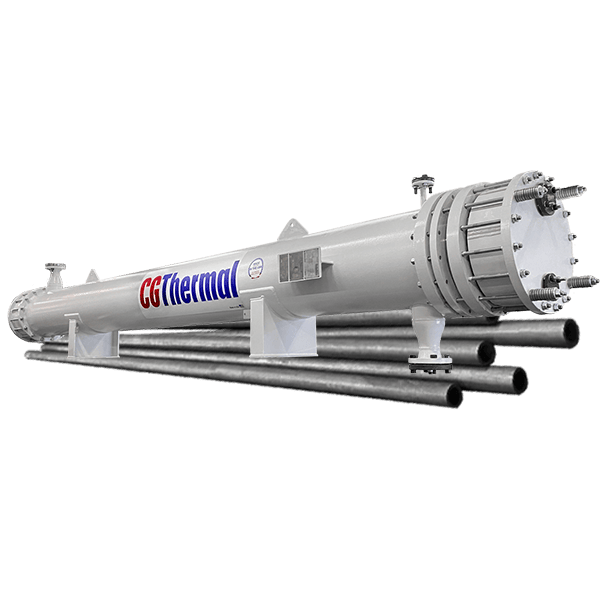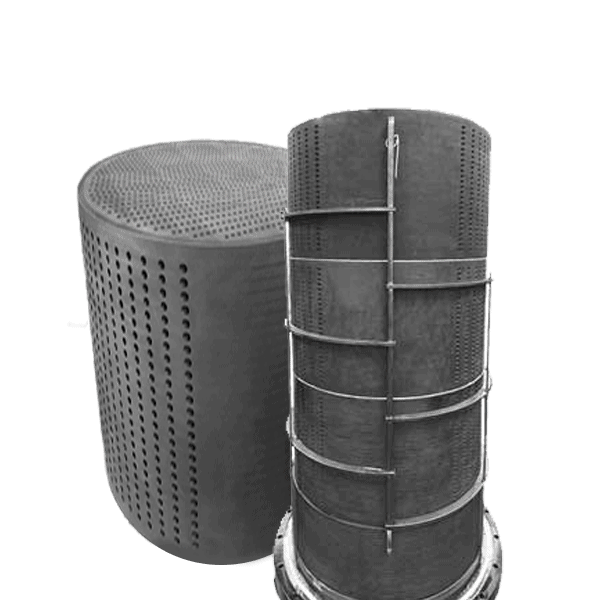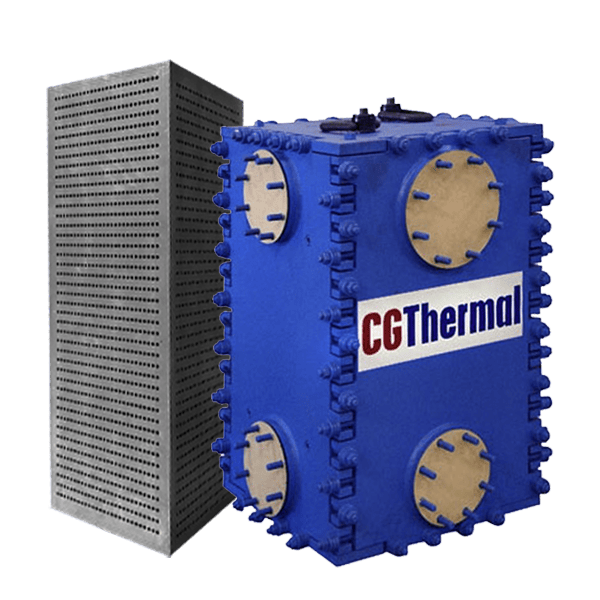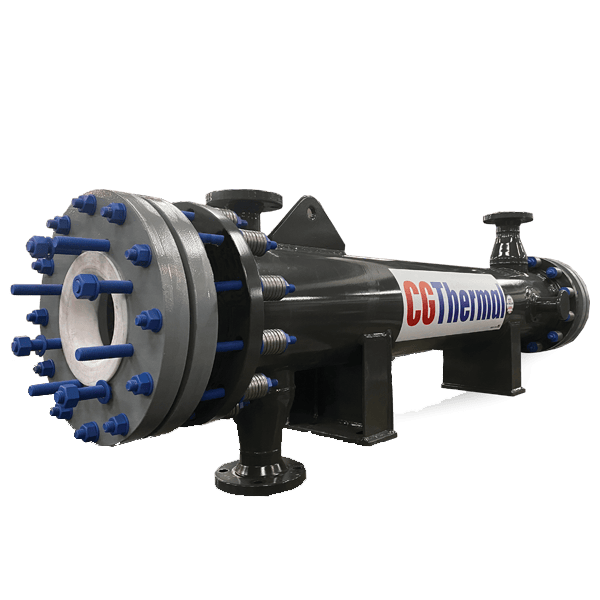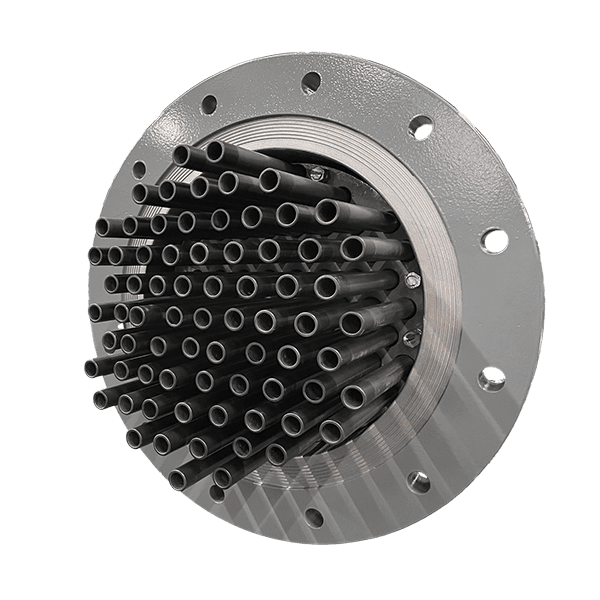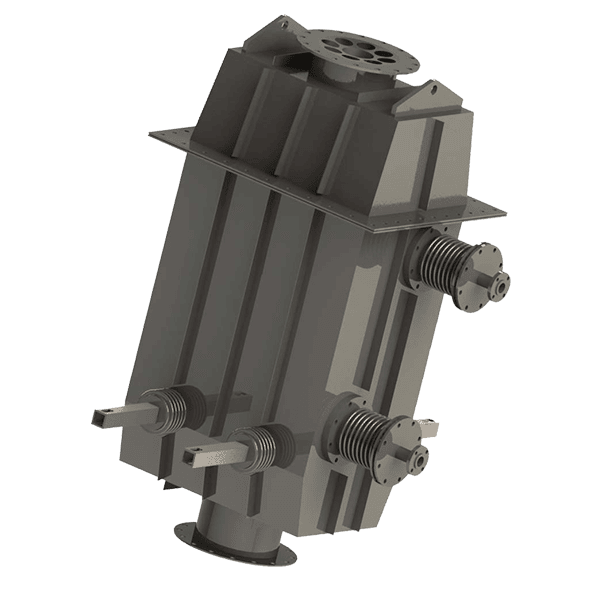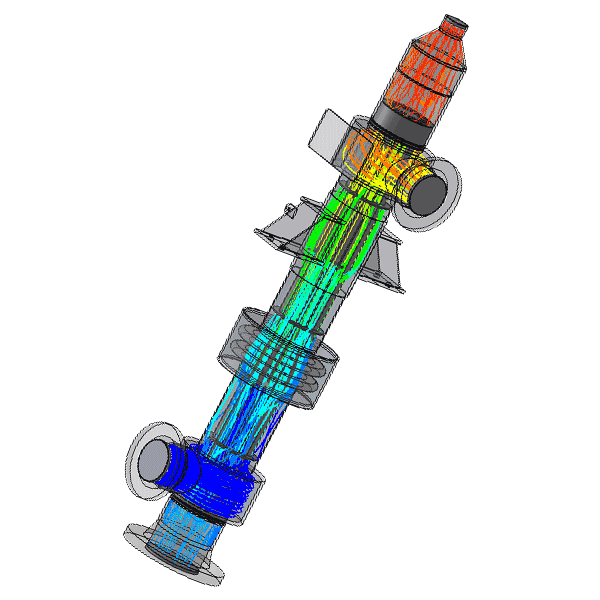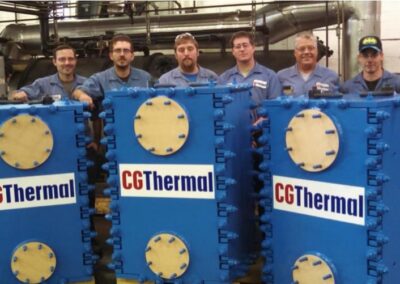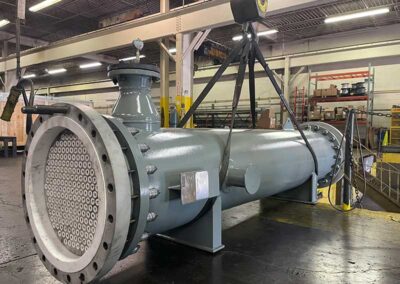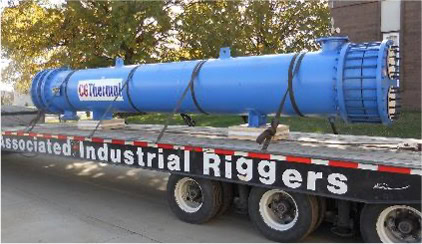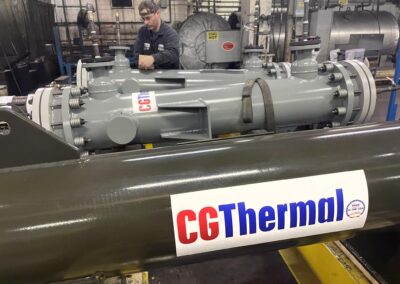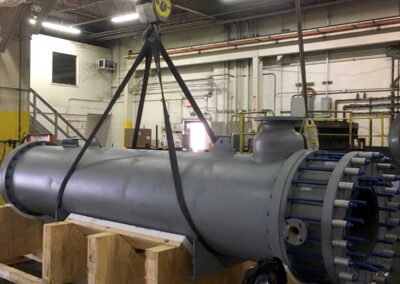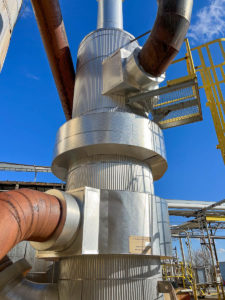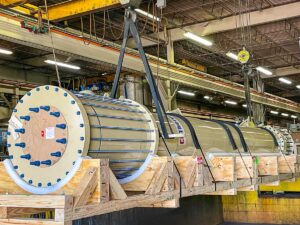Process Heat Exchangers
Less downtime. Lower maintenance. CG Thermal Heat Exchangers & Fluoropolymers.Products for Superior Performance
At CG Thermal, we are committed to providing customized solutions for heat and mass transfer, storage, and transport in a wide range of process equipment. We also offer turnkey engineering, technical support, and consulting services to ensure that you receive the exact heat exchanger solution for your needs.
Some of the materials and configurations we offer include:
Understanding Heat Exchangers
Heat exchangers are available in a wide range of designs and typically classified by flow configuration, heat transfer mechanisms, and material composition.
Heat exchangers facilitate the transfer of heat between process fluids in corrosive applications. They use various methods, configurations, and materials to ensure ideal energy transmission between the streams. Many criteria need to be considered when designing a heat exchanger. Pressures, temperatures, fluid composition, as well as dimensional or pressure drop limitation are fundamental. These criteria along with other considerations such as maintainability or fouling resistance, will be the basis for choosing the most suitable configuration and materials of construction.
A well-designed heat exchanger will minimize thermal resistance. This in turn minimizes the surface area required resulting in the most economic solution. The designer can work with velocity, configuration of flow and baffles, tube diameter, and materials of construction to maximize thermal efficiency.
With the right process heat exchanger, users can control exothermic and endothermic reactions, maintain bath temperatures, remove heat caused by chemical dilution, and improve the heating and cooling of large-scale chemical process fluids. Heat exchangers are also used to recover heat from exhaust streams to preheat incoming ambient air or create heat to be used elsewhere in the facility To select the most effective heat exchanger for your process operations, it is important to understand how a heat exchanger works.
Flow Configurations
Flow configuration determines the flow direction of the fluids within the heat exchanger. These configurations include:
- Cocurrent. In cocurrent flow heat exchangers, the fluids run parallel to each other in the same direction within the exchanger, allowing for even heat exchange across the barrier.
- Countercurrent. Countercurrent exchangers facilitate parallel movement in opposite directions, which allows for a higher level of heat exchange between fluids.
- Crossflow. Crossflow heat exchangers exhibit perpendicular fluid movement, providing a level of heat exchange efficiency roughly between cocurrent and countercurrent transfer configurations.
- Hybrid flow. A hybrid flow heat exchanger incorporates any combination of the above configurations into one heat exchange system and can be tailored to meet the specific needs of a given operation.
Heat Transfer Mechanisms
Heat transfer mechanisms govern the way that heat moves from one fluid to the other through contact with a surface area. These mechanisms are greatly affected by surface cleanliness and fluid velocity. A transfer surface that is fouled with debris has a lower heat transfer coefficient than a clean surface, so heat transfer components must be properly sized and regularly maintained. The velocity of the fluid will affect the amount and speed of heat transference.
Heat exchanger designs must therefore consider the materials, surface area, heat transfer coefficient, and fluid properties when developing a heat exchanger for a particular application. Heat exchangers may be further categorized by their function:
- Fall film absorbers. A low flow of liquid creating a film on the tube interior comes in contact with a vapor stream that is absorbed in that fluid while they are cooled by a lower temperature stream on the exterior tube surface.
- Evaporators. A fluid is heated such that some or all of that fluid becomes vapor. This is commonly used to remove water and concentrate a stream.
- Condensers. This heat exchanger is designed to cool a gaseous fluid to its liquid state.
- Coolers and heaters. Common liquid-to-liquid heat transfer is used for a wide range of applications.
- Interchangers. Heat is transferred between two, often corrosive process streams.
- High-temperature heat recovery. Transfer of waste heat energy to a secondary stream utilized to improve efficiency. Also commonly used to preheat air and cool hot gas streams in catalytic operations.
Common Materials for Heat Exchangers
Heat exchanger material selection is primarily based on the intended application. Temperature, pressure and corrosion resistance are the most fundamental criteria to considering the optimal materials of construction. Additionally, thermal conductivity and resistance to fouling are balanced with the material cost to evaluate the best OPEX/CAPEX solution.
At CG Thermal, we strive to provide you with the materials and technologies best suited for your system’s unique heat exchange requirements. We offer heat exchangers from the following materials:
Umax Ceramic Heat Exchangers
CG Thermal’s Umax advanced ceramic heat exchanger is extremely erosion-resistant and corrosion-resistant with an exceptionally high thermal conductivity that remains unmatched by any other material commonly found in the marketplace. The alpha sintered SIC tube has no free silicon, making to inert to virtually any process fluid composition.
Graphite Heat Exchangers
CG Thermal Impervite® graphite heat exchangers are ideally suited for the processing of sulfuric acid, hydrochloric acid, phosphoric acid, waste acids, and chlorinated hydrocarbons. Impervite fully graphitized tubing combines high thermal conductivity, low thermal expansion, and low carbon content, resulting in high thermal efficiency, higher thermal shock resistance, and excellent fatigue life. It consists of a graphite substrate impregnated using a proprietary phenolic impregnation process. It has excellent machining, physical, and thermal properties.
Impervite® Advanced Graphite – Composite Heat Exchangers
This graphite composite has superior resistance to impact and thermal shock and can be used in higher pressure applications. It is ideal for applications prone to fouling. Not only does its smooth surface retard fouling, because of the absence of metallic bonding, the tubes are easily cleaned.
Stainless Steel Heat Exchangers
Stainless steel is one of the most popular metal material selections for heat exchangers due to its ability to tolerate high pressures and temperatures and its good resistance to many corrosive streams. Though stainless steel has lower thermal conductivity than some other materials, the high tensile strength of the material allows designers to account for this by creating thinner-walled components that will still facilitate heat transfer. There is a wide array of stainless steel grades, some of which provide excellent service life with +1500F gas streams.
Nickel-Alloy Heat Exchangers
High-performance nickel-alloy heat exchangers are employed for harsher operating conditions. Nickel alloys have an extremely wide temperature tolerance, high strength, and durability. Their corrosion rates make them a good solution for many reducing acids at moderate temperatures and chlorine concentrations.
Our extensive portfolio of customizable thermal exchange systems include:
Shell and Tube Heat Exchangers
All the materials described above can be used in the shell and tube heat exchanger configurations. Counter-current flow is almost always chosen for its higher thermal efficiency. Multiple pass arrangements will be used for low flow and/or higher temperature range applications. Shell and baffle materials will be chosen based on the fluid composition and temperatures they will experience. Our Umax Advanced Ceramic, Impervite LT graphite, and Impervite PPS-GR shell and tube exchangers are commonly chosen for use with the harshest, process streams. Our AirBTU VPRR gas-to-gas high-temperature shell and tube recuperator is typically constructed of a stainless steel alloy.
Cubic Block Heat Exchangers
Manufactured from Impervite graphite, our cubic block heat exchangers are ideal for low flow applications. They are often used as interchangers since graphite or fluoropolymer lined heads can be readily provided on both sides of the exchanger. These have a compact design and high thermal efficiency. This design provides exceptional thermal efficiency and is often used for processing highly corrosive acids and chlorinated hydrocarbons.
Multi-Blox™ Cylindrical Heat Exchangers
CG Thermal’s Multi-Blox™ heat exchanger design is specifically engineered to withstand long-term, non-stop usage. A low fixed shellside flowrate, large temperature range, or length restrictions might make this design desirable. Our design uses longer Impervite graphite blocks to reduce the number of sealing gaskets required.
Increase Your Plant Productivity, Contact CG Thermal
At CG Thermal, we are dedicated to becoming an indispensable resource for superior technologies, solutions, and thermal expertise. Our comprehensive range of industrial heat exchangers are tailored to meet the needs of an expansive range of applications, including chemical processing, metal finishing, and semiconductor and polymer production.
In addition to our extensive selection of heat exchangers, we are pleased to offer custom-designed components and patented materials for process operations, including Fluoropolymer lined columns and vessels and Pexgol pipe technology.
Beyond our product technologies, we provide engineering and technical support, and turnkey solutions that minimize operating costs, maximize productivity and improve our customers’ competitive position. To learn more about CG Thermal’s products and services, please contact us today.


